QUINACRINE MUSTARD DIHYDROCHLORIDE
Synonym(s):2-Methoxy-6-chloro-9-(4-bis[β-chloroethyl]amino-1-methylbutylamino)acridine dihydrochloride;9-[4-(Bis(2-chloroethyl)amino)-1-methylbutylamino]-6-chloro-2-methoxyacridine dihydrochloride
- CAS NO.:4213-45-0
- Empirical Formula: C23H30Cl5N3O
- Molecular Weight: 541.77
- MDL number: MFCD00043254
- EINECS: 224-140-9
- SAFETY DATA SHEET (SDS)
- Update Date: 2025-09-08 08:36:46

What is QUINACRINE MUSTARD DIHYDROCHLORIDE?
Description
Quinacrine mustard is a fluorescent DNA-intercalating agent. It selectively binds to adenine-thymine (AT) base pairs over guanine-cytosine (GC) base pairs. Quinacrine mustard has been used to label metaphase chromosomes for karyotyping by autoradiography. It displays excitation/emission maxima of 425/480 nm, respectively.
The Uses of QUINACRINE MUSTARD DIHYDROCHLORIDE
Quinacrine mustard dihydrochloride is a fluorescent probe.
What are the applications of Application
Quinacrine mustard dihydrochloride is a fluorescent probe
Safety Profile
Questionable carcinogen with experimental neoplastigenic data. Human mutation data reported. Corrosive. When heated to decomposition it emits very toxic fumes of Cland NOx. See also QUINACRINE MUSTARD.
Properties of QUINACRINE MUSTARD DIHYDROCHLORIDE
| storage temp. | −20°C |
| solubility | Chloroform: soluble |
| form | A crystalline solid |
| Water Solubility | Water: soluble |
| BRN | 3819822 |
| CAS DataBase Reference | 4213-45-0 |
| EPA Substance Registry System | 1,4-Pentanediamine, N1,N1-bis(2-chloroethyl)-N4-(6-chloro-2-methoxy-9-acridinyl)-, dihydrochloride (4213-45-0) |
Safety information for QUINACRINE MUSTARD DIHYDROCHLORIDE
| Signal word | Danger |
| Pictogram(s) |
 Skull and Crossbones Acute Toxicity GHS06  Health Hazard GHS08 |
| GHS Hazard Statements |
H317:Sensitisation, Skin H334:Sensitisation, respiratory H361:Reproductive toxicity |
| Precautionary Statement Codes |
P202:Do not handle until all safety precautions have been read and understood. P261:Avoid breathing dust/fume/gas/mist/vapours/spray. P280:Wear protective gloves/protective clothing/eye protection/face protection. P301+P310:IF SWALLOWED: Immediately call a POISON CENTER or doctor/physician. P302+P352:IF ON SKIN: wash with plenty of soap and water. |
Computed Descriptors for QUINACRINE MUSTARD DIHYDROCHLORIDE
| InChIKey | JETDZFFCRPFPDH-UHFFFAOYSA-N |
| SMILES | C1(NC(C)CCCN(CCCl)CCCl)C2C=CC(Cl)=CC=2N=C2C=CC(OC)=CC=12.Cl.Cl |
New Products
4,4-Difluoropiperidine hydrochloride tert-butyl 9-methoxy-3-azaspiro[5.5]undecane-3-carboxylate Indole Methyl Resin N-Isopropylurea N,N-Dicyclohexylcarbodiimide(DCC) MELDRUMS ACID 5-METHYLISOXAZOLE-4-CARBOXYLIC ACID Magnessium Bis glycinate Zinc ascorbate 1-bromo-2-butyne 2-acetamidophenol 9(10H)-anthracenone Erythrosin B, 4-Piperidinopiperidine 2-((4-morpholinophenylamino) (methylthio) methylene) malononitrile 2,4-dihydroxybenzaldehyde 3-(4-morpholinophenylamino)-5-amino-1H-pyrazole-4-carbonitrile Methyl 2-methylquinoline-6-carboxylate 2,6-dichloro-4-nitropyridine 4-Bromo-2-chlorobenzonitrile 2-(benzylamino)acetic acid hydrochloride 4-(tert-Butoxycarbonylamino)but- 2-ynoic acid 3,4-dihydro-2H-benzo[b][1,4]dioxepine 1-Phenyl-1-cycloprppanecarboxylicacidRelated products of tetrahydrofuran


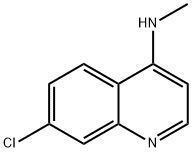

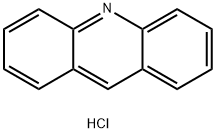
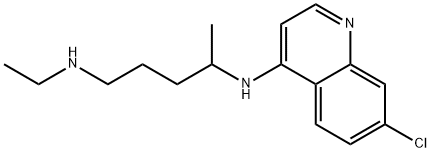
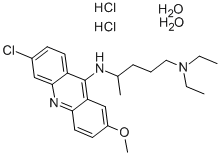
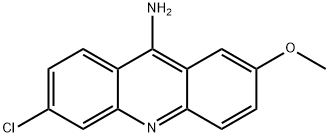
You may like
-
 Quinacrine mustard dihydrochloride CAS 4213-45-0View Details
Quinacrine mustard dihydrochloride CAS 4213-45-0View Details
4213-45-0 -
 3-(4-amino-1-oxoisoindolin-2-yl)-1-methylpiperidine-2,6-dione 98%View Details
3-(4-amino-1-oxoisoindolin-2-yl)-1-methylpiperidine-2,6-dione 98%View Details -
 614-19-7 98%View Details
614-19-7 98%View Details
614-19-7 -
 3112-85-4 Methyl phenyl sulfone 98%View Details
3112-85-4 Methyl phenyl sulfone 98%View Details
3112-85-4 -
 20677-73-0 (2,2-diethoxyethyl)methylamine 98%View Details
20677-73-0 (2,2-diethoxyethyl)methylamine 98%View Details
20677-73-0 -
 3-(4-(hydroxyamino)-1-oxoisoindolin-2-yl)piperidine-2,6-dione 98%View Details
3-(4-(hydroxyamino)-1-oxoisoindolin-2-yl)piperidine-2,6-dione 98%View Details -
 57381-49-4 2-bromo-4-chlorobenzonitrile 98%View Details
57381-49-4 2-bromo-4-chlorobenzonitrile 98%View Details
57381-49-4 -
 4,6-dichloropyrimidine-5-carbaldehyde 98%View Details
4,6-dichloropyrimidine-5-carbaldehyde 98%View Details
5305-40-8
Statement: All products displayed on this website are only used for non medical purposes such as industrial applications or scientific research, and cannot be used for clinical diagnosis or treatment of humans or animals. They are not medicinal or edible.
